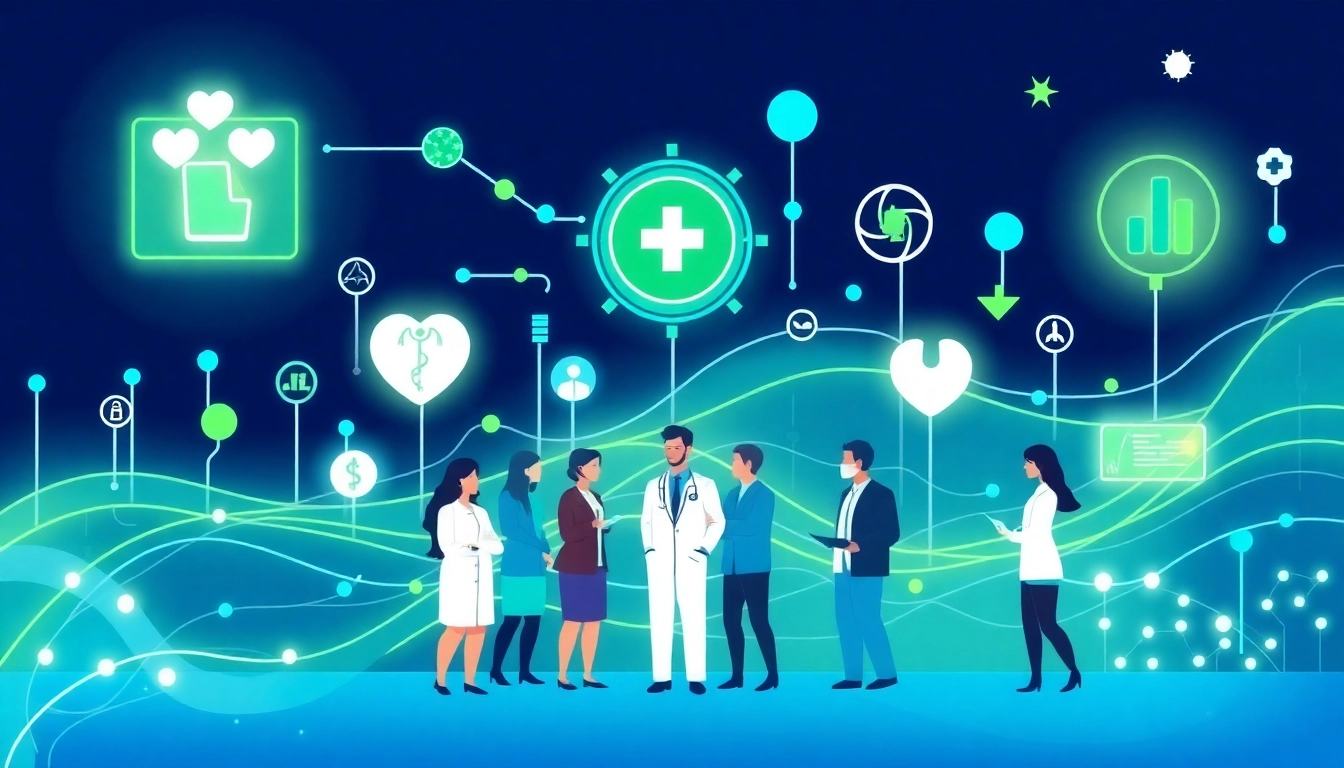Understanding Informatics
Definition and Scope of Informatics
Informatics, at its core, is the science of how to use data, information, and knowledge to improve human health and healthcare delivery systems. It spans a wide range of domains, bringing together elements of computer science, information science, and health sciences, creating an interdisciplinary framework essential for leveraging information systems in healthcare settings. The importance of informatics cannot be overstated – as healthcare evolves, the integration of robust informatics practices ensures that patient care is efficient, effective, and adapted to the needs of modern society.
Specifically, health informatics focuses on the intersection of information technology (IT) and healthcare. The American Medical Informatics Association (AMIA) emphasizes that informatics is essential for enhancing patient outcomes through improved data management, which is crucial in today’s data-driven environment. The scope of informatics encompasses a variety of applications, from electronic health records (EHRs) to telemedicine, highlighting its role in modernizing healthcare across different levels of expertise and practicality. You can explore these vast dimensions of informatics further on www.informaticsview.com.
Importance of Informatics in Healthcare
The significance of informatics in healthcare is continually affirmed through practical applications that enhance patient care and streamline clinical processes. Informatics improves decision-making by providing clinicians with critical data at the point of care. This enables faster interventions, more accurate diagnoses, and tailored treatment plans based on patient-specific information.
Moreover, informatics aids in the management and analysis of vast amounts of health data, enabling healthcare providers to identify trends, conduct population health assessments, and drive research initiatives. For instance, public health informatics plays a vital role in disease surveillance and health promotion, allowing for timely responses to public health emergencies.
Additionally, the integration of informatics systems fosters better communication among healthcare providers, patients, and various stakeholders in the healthcare ecosystem. This transparency is essential for fostering trust and collaboration aimed at improving overall health outcomes.
Key Concepts of Informatics
Several key concepts underpin the field of health informatics:
- Data Management: The process of capturing, storing, and analyzing health data to ensure its integrity and availability for decision-making.
- Interoperability: The ability of different information systems to communicate, exchange, and make use of information, critical for coordinated care.
- Usability: Designing user-friendly systems that facilitate easy interaction for healthcare professionals and patients, promoting better adoption and efficiency.
- Privacy and Security: Safeguarding health information to protect patient confidentiality and comply with regulations such as HIPAA, ensuring trust in healthcare practices.
Applications of Informatics in Healthcare
Electronic Health Records (EHRs)
One of the most pivotal applications of informatics in healthcare is the implementation of Electronic Health Records (EHRs). EHRs streamline the collection, storage, and accessibility of patient information, enabling healthcare providers to access critical data in real-time. This capability improves coordination among care teams, enhances the quality of care, and minimizes errors associated with paper records.
EHR systems integrate various functionalities, such as patient history, lab results, treatment plans, and billing information, allowing healthcare providers to make informed decisions rapidly. For instance, implanting clinical reminders for preventive care within EHRs encourages timely vaccinations and screenings based on patient demographics.
Clinical Decision Support Systems (CDSS)
Clinical Decision Support Systems (CDSS) represent another crucial facet of health informatics, providing healthcare providers with evidence-based tools to guide clinical decisions. CDSS includes a wide range of technologies, from simple alerts about potential drug interactions to complex algorithms that recommend personalized treatment pathways based on data analytics.
The implementation of CDSS has shown significant improvements in patient safety and care quality. Studies have demonstrated that the use of CDSS can reduce medication errors and hospital readmissions by alerting clinicians to possible adverse effects and indicating alternative therapies. Moreover, these systems can aggregate and analyze data from multiple sources, offering predictive insights that revolutionize medical practices.
Telemedicine Innovations
Telemedicine is rapidly transforming the healthcare landscape, providing remote healthcare services to patients through telecommunications technology. The rise of telehealth, spurred by the COVID-19 pandemic, has underscored the importance of informatics in facilitating virtual consultations, remote monitoring, and digital follow-ups with patients.
Leveraging various informatics tools, telemedicine enhances accessibility, especially for patients in rural or underserved areas. By eliminating geographic barriers, telemedicine enables timely interactions between patients and healthcare providers, improving patient engagement and continuity of care. Furthermore, telehealth technology collects valuable patient data, which feeds back into healthcare systems for ongoing improvement and adaptation to patient needs.
Challenges in Implementing Informatics
Data Privacy and Security
Despite the numerous benefits of health informatics, several challenges persist, particularly concerning data privacy and security. Healthcare organizations handle sensitive patient information that must be protected from breaches and unauthorized access. Breaches not only jeopardize patient confidentiality but also expose healthcare organizations to legal risks and financial penalties.
The implementation of robust cybersecurity measures—such as advanced encryption technologies, secure access protocols, and regular security audits—is imperative. Moreover, educating healthcare personnel about data security best practices plays a crucial role in safeguarding patient information and fostering a culture of vigilance within healthcare organizations.
Interoperability Issues
Interoperability remains a significant hurdle in the realm of health informatics. Diverse electronic health record systems and technologies often lack compatibility, resulting in fragmented care and insufficient data exchange between providers. To overcome these challenges, healthcare organizations must adopt standardized protocols and frameworks, such as Fast Healthcare Interoperability Resources (FHIR), to promote seamless data sharing and communication.
Working towards interoperability fosters a unified health information exchange that allows patients’ comprehensive histories to follow them across different providers and care settings. This is particularly vital for chronic disease management, where coordinated care from multiple specialists is essential for optimal patient outcomes.
Education and Training Gaps
Another notable challenge in the health informatics landscape lies in the vital need for education and training of healthcare professionals in informatics. Often, there exists a disparity between the rapid advancement in informatics technologies and the proficiency of healthcare workers using them. This gap can result in underutilization of systems and technologies that could otherwise improve patient care.
Investing in comprehensive training programs tailored to healthcare professionals can enhance their technological proficiency and understanding of informatics systems. Continuous professional development and access to updated training resources are essential for ensuring that healthcare providers remain adept at leveraging informatics in their daily practice.
Future Trends in Health Informatics
The Role of Artificial Intelligence
Artificial Intelligence (AI) is poised to significantly impact the future of health informatics, revolutionizing how healthcare data is processed and utilized. From predictive analytics enabling early diagnosis to machine learning algorithms enhancing treatment recommendations, AI technologies promise to elevate the caliber of patient care.
AI systems can analyze complex datasets rapidly, unearthing patterns and insights that human clinicians may overlook. For instance, AI-based tools can help in risk stratification, identifying patients at high risk of developing conditions like diabetes or cardiovascular diseases, thereby enabling preventive interventions. Furthermore, AI tools can assist in automating routine tasks, allowing healthcare providers to focus more on patient-centered care and less on administrative burdens.
Predictive Analytics in Patient Care
Predictive analytics is another transformative trend within health informatics. By leveraging historical health data, predictive analytics can forecast health outcomes, streamline resource allocation, and identify patients requiring proactive interventions. This approach can significantly impact managing chronic diseases, where targeted strategies are essential to enhance patient compliance and outcomes.
For example, hospitals are increasingly adopting predictive models to anticipate readmission rates, allowing them to allocate resources more effectively and implement tailored post-discharge support for high-risk patients. Successful implementations of predictive analytics not only improve patient outcomes but can also yield considerable cost savings for healthcare organizations by reducing unnecessary hospitalizations.
Informatics in Public Health Initiatives
Public health informatics is vital in addressing population health challenges by utilizing informatics tools to collect, analyze, and disseminate health data. This branch of informatics focuses on the application of data-driven methods to tackle health disparities, improve disease surveillance, and develop public health strategies that effectively respond to community needs.
During health crises, such as pandemics, public health informatics plays an integral role in tracking disease spread, optimizing resource use, and coordinating response efforts across jurisdictions. The increased adoption of informatics in public health initiatives will likely lead to more effective interventions and improved public health outcomes, ultimately contributing to societal wellbeing.
Conclusion and Key Takeaways
Recap of Informatics Benefits
In conclusion, informatics stands at the forefront of healthcare innovation, providing the tools and methodologies necessary to enhance patient outcomes and streamline healthcare delivery. From facilitating access to comprehensive patient records to optimizing clinical decision-making, informatics is an essential component that bridges data with practical healthcare applications. The potential for continued advancements in health informatics promises to further transform the field, driving improvements that benefit not only individual patients but also the healthcare system as a whole.
Strategies for Effective Implementation
To harness the full potential of health informatics, organizations must develop strategic approaches that emphasize collaboration, standardization, and continuous education. Prioritizing data interoperability, investing in training, and fostering a culture of innovation are fundamental steps toward effective informatics implementation. Additionally, engaging stakeholders across disciplines ensures that solutions address real-world challenges, fostering a robust healthcare ecosystem that benefits all.
Resources for Further Learning
For those seeking to deepen their understanding of health informatics, numerous resources are available, including academic courses, online training programs, and professional organizations. Exploration of publications in medical informatics, participation in workshops, and engagement with industry conferences can enhance knowledge and foster connections within the field. By investing in ongoing education and engagement, healthcare professionals can remain at the cutting edge of informatics, ensuring that they leverage technology effectively for improved patient care.








